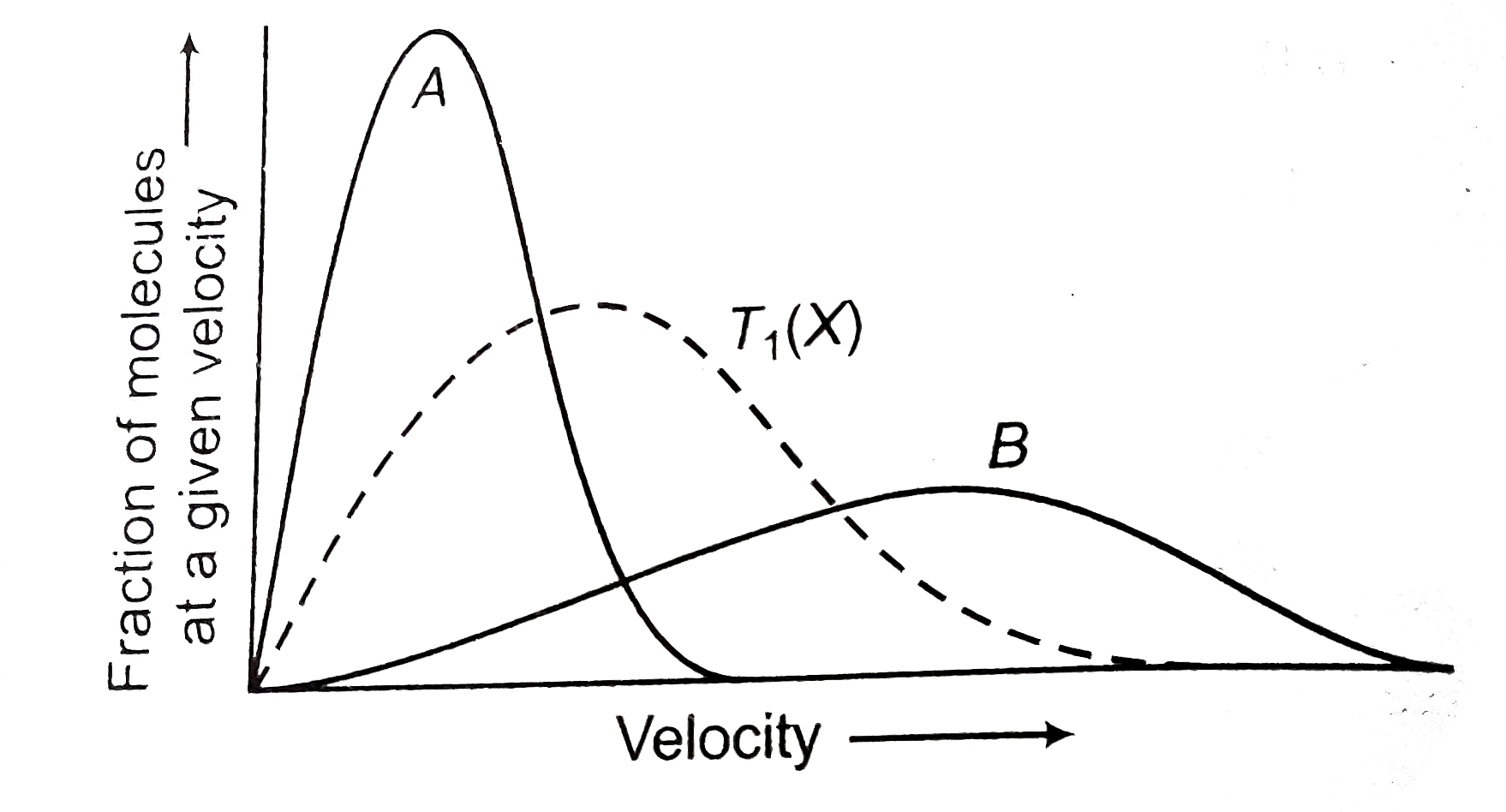Knowing that average kinetic energy of an ideal gas (X) is directly proportinal to absolute temperature, if T1=273K, which statements describe the other curves?

Curve A is for heavier gas but at same temperature
Curve B is for the same gas but at 373K
Curve A is for the same gas but at 373K
Curve B is for lighter gas but a same temperature
The correct Answer is:A, B, D
Topper's Solved these Questions
- STATES OF MATTERBOOK - IIT-JEE PREVIOUS YEAR (CHEMISTRY)CHAPTER - STATES OF MATTEREXERCISE - MATCH THE COLUMN
1 Videos
- STATES OF MATTERBOOK - IIT-JEE PREVIOUS YEAR (CHEMISTRY)CHAPTER - STATES OF MATTEREXERCISE - COMPREHENSION_TYPE
1 Videos
- STATES OF MATTERBOOK - IIT-JEE PREVIOUS YEAR (CHEMISTRY)CHAPTER - STATES OF MATTEREXERCISE - INTEGER_TYPE
2 Videos
- SOME BASIC CONCEPTS OF CHEMISTRYBOOK - IIT-JEE PREVIOUS YEAR (CHEMISTRY)CHAPTER - SOME BASIC CONCEPTS OF CHEMISTRYEXERCISE - Subjective Questions
2 Videos
- SURFACE CHEMISTRYBOOK - IIT-JEE PREVIOUS YEAR (CHEMISTRY)CHAPTER - SURFACE CHEMISTRYEXERCISE - JEE Main And Advanced
17 Videos
Similar Questions
Knowledge Check
The average kinetic energy of the molecules of an ideal gas is directly proportional to
AVelocity of MoleculesBMass of MoleculesCAbsolute temperature of the gasDTemperature of environmentThe average kinetic energy of a molecule of a gas at absolute temperature T is proportional to
A1/TB√TCTDT2Kinetic theory of gases is a generalization offered by Maxwell. Boltzmann, Clausius, etc. to explain the behaviour of ideal gases. This theory assumes that ideal gas molecules neither attract nor repel each other. Average kinetic energy of gas molecules is directly proportional to the absolute temperature. A gas equation called kinetic gas equation was derived on the basis of kinetic theory
PV=13mv2
The average kinetic energy per molecule of an ideal gas is equal to :A0.5kJB0.5RTC1.5kTD1.5RT2
The average kinetic energy of a gas molecule is _______ proportional to the absolute temperature of the gas.
View SolutionThe average kinetic energy of a molecule of a gas at absolute temperature T is proportional to
View SolutionKinetic theory of gases is a generalization offered by Maxwell. Boltzmann, Clausius, etc. to explain the behaviour of ideal gases. This theory assumes that ideal gas molecules neither attract nor repel each other. Average kinetic energy of gas molecules is directly proportional to the absolute temperature. A gas equation called kinetic gas equation was derived on the basis of kinetic theory
PV=13mv2
If the absolute temperature of a gas in a fixed volume is quadrupled, then the velocity in intial and final states would be related as :
View SolutionKinetic theory of gases is a generalization offered by Maxwell. Boltzmann, Clausius, etc. to explain the behaviour of ideal gases. This theory assumes that ideal gas molecules neither attract nor repel each other. Average kinetic energy of gas molecules is directly proportional to the absolute temperature. A gas equation called kinetic gas equation was derived on the basis of kinetic theory
PV=13mv2
The kinetic energy of 2.8 g of nitogen gas at 127∘C is nearly :
View SolutionKinetic theory of gases is a generalization offered by Maxwell. Boltzmann, Clausius, etc. to explain the behaviour of ideal gases. This theory assumes that ideal gas molecules neither attract nor repel each other. Average kinetic energy of gas molecules is directly proportional to the absolute temperature. A gas equation called kinetic gas equation was derived on the basis of kinetic theory
PV=13mv2
Which of the following do not pertain to the postulates of kinetic theory of gaes ?
View Solution
